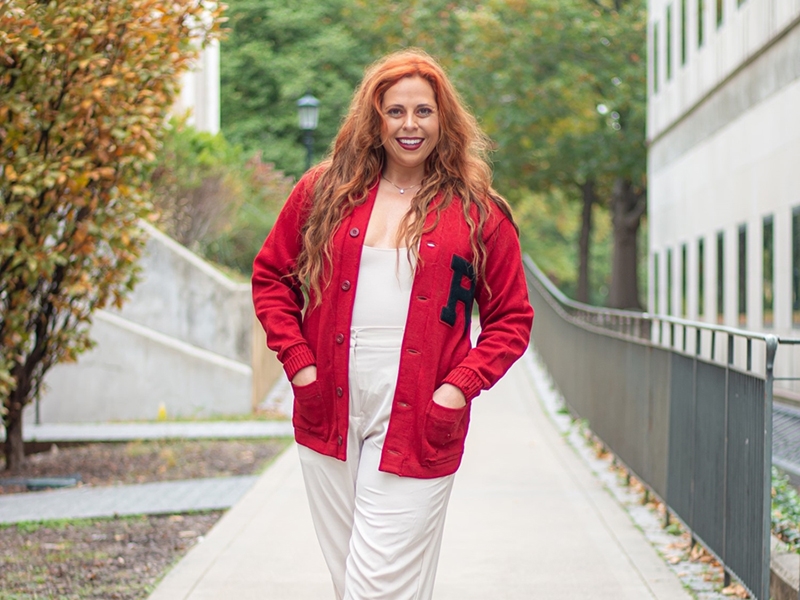
Graduate and international education is all about discoveries — the discovery of knowledge, the discovery of research and creative scholarship that improves lives, and the discovery of new countries, cultures and people. The Graduate School and International Education is celebrating our students, faculty and staff that make discoveries happen at the U of A.
Spending her early years in rural Eureka Springs, Shelby Osborne never imagined she would be a U of A graduate student looking to other planets with NASA—specifically unique climate modeling of those lightyears-away destinations.
The self-dubbed "Barbie of NASA," Osborne is now a doctoral student in the Environmental Dynamics program, but she began her academic career in wildlife biology and then nursing during her undergraduate studies before realizing that she was not meant to work in either of these fields.
"I could have been a doctor, but I didn't have a passion for it," she said. "So, then I got into conservation and into micro and macroecology. When I realized how much math was involved in predator-prey relationships, my interest took off. It tied everything I was interested in together, but that's what was also hard because I found such a niche interest that finding a master's degree that matched that interest was difficult."
After earning her bachelor's in biology from a local university, she earned a master's degree in earth systems, science and policy from the University of North Dakota. From there, Osborne began climate modeling. She became interested in terraforming other planets, which led her to the planetary sciences. Due to her interest in the origins of life, she began conducting global climate modeling for planets other than Earth.
As an Arkansas native, Osborne saw attending the U of A as "the highest standard of achievement." She never fathomed that her dreams of attending here would come true, because she previously had not been able to afford it. Then she applied for the Environmental Dynamics doctoral program and included her publication from the Journal of Arkansas Academy of Science about cliff swallows' response to urbanization. Her research work earned her a graduate assistant spot in the department, and Dr. Vincent Chevrier, associate research professor in the Center for Space and Planetary Sciences, serves as her adviser.
"In Environmental Dynamics, we are bringing all of these disciplines together for the sake of climate change, human survival, agriculture, freshwater access—all these extraordinarily relevant issues," she said.
In addition to her ENDY graduate assistantship, Osborne is also currently interning virtually for NASA in Washington, D.C., at the Office of Planetary Protection. In this role, she is helping maintain the sterility standards on Earth and bodies within our solar system. Her internship has included traveling often to Huntsville as well as other locations such as New York, Los Angeles and Toronto. She hopes the internship will lead to a full-time position with NASA.
"When I graduate in 2025, I will be able to immediately begin my career in planetary protection," she said. "The NASA internship is such a perfect gateway into a NASA career. If you are a student who is interested in planetary science, now is a great time to pursue it."
She hopes to serve as an inspiration for others aspiring to enter the fields of science, technology, engineering, art and mathematics (STEAM).
"You can come from anything and become anyone," she said. "I want kids of all ages—and even adults—to know that there's someone that they relate to, and make them think, 'If they made it, maybe I can, too.'"
Topics
Contacts
Bethany Tilley, graduate assistant
Graduate School and International Education
479-575-4853, btilley@uark.edu
John Post, director of communications
Graduate School and International Education
479-575-4853, johnpost@uark.edu